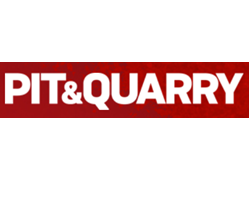Expect MSHA to Continue With its Strong Enforcement Approach

By Margo Lopez and William Doran
October 8, 2020 - The news is full of projections for the presidential election.

Doran
While we do not know which presidential candidate will win, it may not make a dramatic difference this time in terms of the Mine Safety & Health Administration’s (MSHA) focus postelection. MSHA has been active on both the enforcement and rulemaking fronts under the Trump administration, and the agency set a course that it is likely to keep for the foreseeable future.
MSHA’s Role
Regulatory agencies, particularly those led by a presidential appointee, as MSHA is, will usually set a rulemaking agenda and carry out enforcement and other activities that reflect the priorities of the political party that holds the White House. MSHA generally is no exception, but the pendulum has not swung as far as one would have expected under the current administration.

Lopez
While citation statistics continued to modestly decline, the agency has emphasized strong enforcement in the field and is embarking on two new major rulemaking efforts: silica and powered haulage. MSHA also established enforcement and litigation positions that are contrary to what the industry was advocating.
Certainly, MSHA has a critical mission regarding the safety and health of miners. MSHA’s ability to change how it carries out that mission is limited in certain ways by law, though. It would take modifications to the Federal Mine Safety & Health Act to change core MSHA activities such as the mandated “two’s and four’s” regular inspections, or to permit MSHA to modify or rescind a safety standard where the agency cannot convincingly show that the change would have no adverse effect on safety.
Beyond these key limitations, there is still a great amount of room for MSHA to shift its focus to a more compliance assistance/cooperative stance with mine operators that supports safety. We have seen some positive changes in this administration in that regard, but not as much as many were expecting.
One historic change within MSHA that undoubtedly will carry forward is the “One MSHA” reorganization. The reorganization was driven by the severe reduction in coal mines across the U.S., drastically reducing the need for inspectors working within the separate part of the agency dedicated to coal.
Government agencies are generally slow to carry out a reorganization on the scale of One MSHA, but this reorganization is well underway. It would be nearly impossible for a new administration to justify changing things back.
Rulemaking
In rulemaking, the Trump administration continues to enforce the workplace exam rule promulgated in the final hours of the Obama administration. Regardless of the administration after the election, operators must focus on compliance under the new rule. The miner notification provision, among others in the rule, are vague and subject to interpretation – and could create issues with enforcement.
The current administration also is moving toward issuing powered haulage and silica rules, signaling a surprising willingness to initiate major rulemakings. Although it is exceedingly unlikely that either rule will be finalized by January, proposed rules probably will be out by then. Whether we have a Republican or Democrat in the White House, operators should anticipate that these rules – particularly the powered haulage rule – will be finalized by the close of the next term.
Still, the actual provisions in the rules may be different under a Democratic administration. This would mean rulemakings may be slowed if the new administration chooses to significantly change what was originally proposed.
Takeaways
Under the Trump administration, MSHA set a course toward strong enforcement and imposition of significant new regulatory requirements that is going to continue regardless of how the election turns out. The evolution of MSHA toward a single-enforcement management model combining coal and metal/nonmetal is also here to stay.

